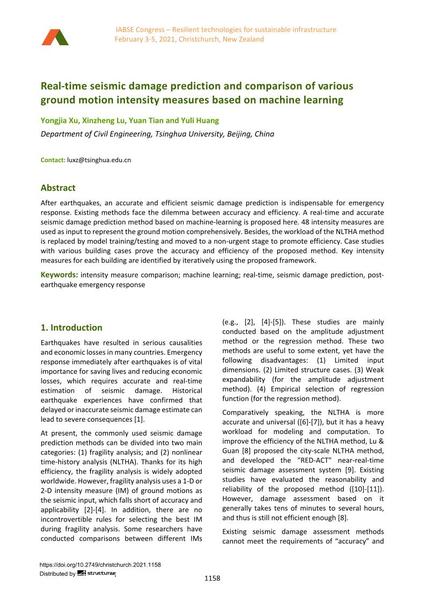Real-time seismic damage prediction and comparison of various ground motion intensity measures based on machine learning

|
|
|||||||||||
Détails bibliographiques
| Auteur(s): |
Yongjia Xu
(Department of Civil Engineering, Tsinghua University, Beijing, China)
Xinzheng Lu (Department of Civil Engineering, Tsinghua University, Beijing, China) Yuan Tian (Department of Civil Engineering, Tsinghua University, Beijing, China) Yuli Huang (Department of Civil Engineering, Tsinghua University, Beijing, China) |
||||
|---|---|---|---|---|---|
| Médium: | papier de conférence | ||||
| Langue(s): | anglais | ||||
| Conférence: | IABSE Congress: Resilient technologies for sustainable infrastructure, Christchurch, New Zealand, 3-5 February 2021 | ||||
| Publié dans: | IABSE Congress Christchurch 2020 | ||||
|
|||||
| Page(s): | 1158-1166 | ||||
| Nombre total de pages (du PDF): | 9 | ||||
| DOI: | 10.2749/christchurch.2021.1158 | ||||
| Abstrait: |
After earthquakes, an accurate and efficient seismic damage prediction is indispensable for emergency response. Existing methods face the dilemma between accuracy and efficiency. A real-time and accurate seismic damage prediction method based on machine-learning is proposed here. 48 intensity measures are used as input to represent the ground motion comprehensively. Besides, the workload of the NLTHA method is replaced by model training/testing and moved to a non-urgent stage to promote efficiency. Case studies with various building cases prove the accuracy and efficiency of the proposed method. Key intensity measures for each building are identified by iteratively using the proposed framework. |
||||
